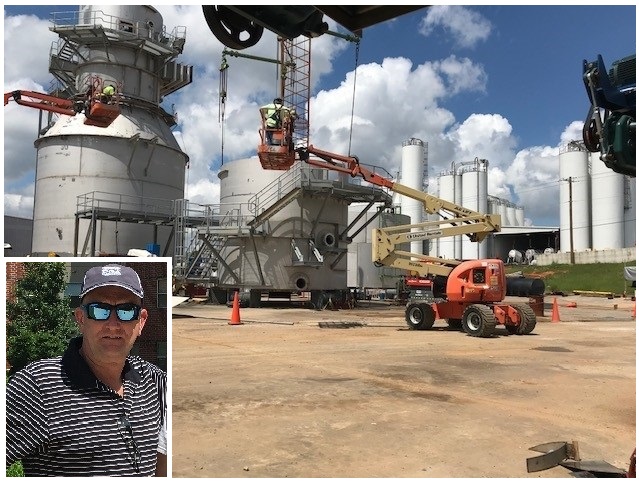
Alum Turns Battery Acid into Fertilizer – While Exceeding EPA Standards
When John (Jack) Richardson, P.E. (BS ’87) took his family on a trip to Pittsburgh, he made a stop at his alma mater to show his children, Matthew and Katelyn, where his career in engineering began.He told them the story of initially pursuing a degree in Architecture before switching to Civil Engineering with an emphasis on structural engineering. Richardson credits the program with providing a strong foundation in problem solving and critical thinking that’s benefitted his career to this day.
Today, Richardson is a project manager for Marsulex Environmental Technologies (MET) in New Jersey. He took the position to increase his versatility within the field—and to allow for career growth. Richardson is currently working on a project to convert industrial battery acid into fertilizer, an initiative born out of the EPA’s industry mandates to reduce emissions. He says the project showcases the need for individuals and companies to continually adapt and innovate within the energy and industrial sector.
MET’s proprietary process was primarily used to remove sulfur from the flue gas stream of utility grade coal fired power plants, with the added benefit of creating a by-product of ammonium sulfate. In the MET process, the ammonium sulfate is created by combining ammonia, oxygen, and water with a flue gas stream containing sulfur dioxide via a spray system and reaction tank. The saturated ammonium sulfate solution passes through a hydroclone, centrifuge, and dryer before emerging as a granular salt.
As the coal fired power industry declined due to stricter compliance limits and alternate technologies, the traditional market for MET’s process decreased. Concurrently, the reduction in emissions resulted in cleaner air but depleted the soil of sulfur—a necessary component in the agricultural industry’s “complete fertilizer” that also consists of nitrogen, phosphorous, and potassium.
Richardson’s company now works with a battery recycler to obtain sulfur from both the recycling flue gas stream and battery acid. Before MET was involved, the recycler sent the battery acid to a treatment facility and captured the particulate in a baghouse—a large scale vacuum—but did not treat the gasses because they were below EPA limits and did not require MET’s process.
Today, MET injects battery acid into the reaction tank to increase the yield of valuable ammonium sulfate. “This combination of treatment eliminates the need and cost for our client to treat the acid, and creates a revenue stream in its place,” states Richardson. The entire process also meets or exceeds EPA emissions limits.
Richardson’s position as a project manager focuses on the engineering, procurement, material supply and construction (EPMC) process. “The success or failure of the project rests on me. I need to understand each aspect of the process and be able to communicate concerns so that the process functions in harmony.” Richardson says that skills he learned at CEE are part of his daily work—including engineering, problem solving, technical writing, and communications.
He’s even discovered that certain classes have benefitted him in unexpected ways. “I didn’t realize that soil mechanics would help me to understand and participate in a solution for a filter press system treating ash residue—or that material science would help me to understand the critical variables of welding processes. Without the depth and breadth of knowledge learned at CEE, I would not have been able to grow and adapt to the changing marketplace as successfully.”